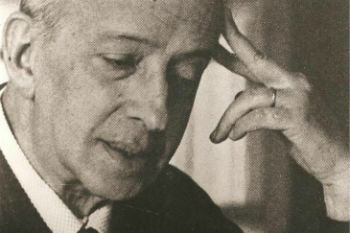The modernist movement in Brazil took place in three periods from 1922 to 1945. Modernism was a reflection of the country's political and social history.
It's from the Modern Art Week that Modernism takes on consistency in Brazil.
At this moment, we have literature and art as a result of changes in Brazilian politics, economy, culture and society.
Characteristics and Phases of Modernism
- First phase of Modernism: reconstruction of Brazilian culture, critical review of the historical past and issues cultural, abolition of the colonized vision, critical nationalism, irony, colloquial language, social criticism.
- Second phase of Modernism: interest in nationalist themes, novel focused directly on facts, novel with a documentary character. In poetry: pessimism, individualism, isolation
- Third phase of Modernism: universal regionalism, objectivism, influence of Symbolism and Parnassianism, valorization of meter and rhyme, metalanguage.
Historical Context of Modernism
At the beginning of the 20th century, Brazil experienced the beginning of the Old Republic (1894-1930). This moment was represented by the interests of rural oligarchies in the practice of the so-called "coffee with milk policy".
In parallel, between 1871 and 1920, Brazil received about millions of immigrants of Italian and Japanese origin. The destination was the coffee plantations or industries in São Paulo.
Large cities began to register problems of the marginalization of ex-slaves and the formation of a proletariat constituted by foreign labor.
Labor also starts to be employed in factories. This is because with the First World War, the importation of products was made difficult and the country had to develop its industrial park.
Anarchist ideas gained publicity in workers' newspapers from 1917, as a reflection of political agitation and the effects of the Russian Revolution that took place in that year. It is in this context that São Paulo becomes the stage for the first general strike.
In 1922, Tenentismo began to influence the entire politics of the 1920s. At the end of the decade, in 1929, the New York Stock Exchange crashed. As a result, the country's main export product, coffee, is undergoing an intense crisis.
The country is experiencing the Revolution of 1930 and, until 1945, the Vargas Era lasted, inducing political and economic transformations.
It is this historical context that leads Brazil to the modernity of the 20th century, imposing a break with the previous century.
pre-modernism
O pre-modernism marked the transition between Symbolism and Modernism and was marked by the existence of various trends in art. Therefore, it is considered a cultural syncretism.
Its characteristics were: interest in the Brazilian reality, preference for daily national and social issues, simple and colloquial language.
the modern art week
THE modern art week took place in São Paulo, in 1922, and marks the first Modernist moment in Brazil.
It represented a watershed in Brazilian culture, generating profound transformations and solidifying Modernism in the country.
postmodernism
O Postmodernism it is the artistic movement registered after the Second World War (1939-1945).
It is considered a multifaceted period of artistic manifestations. Among its characteristics are: individualism, plurality, freedom of expression and spontaneity.
Learn more about Modernism:
- Characteristics of Modernism
- Modernism in Brazil
- The Language of Modernism
- Authors of the First Phase of Modernism in Brazil
- Authors of the Second Phase of Modernism in Brazil
- Exercises on the first modernist generation (1st phase of modernism)
- Exercises on the second modernist generation (2nd phase of modernism)
Also watch a video about the Modern Art Week:

